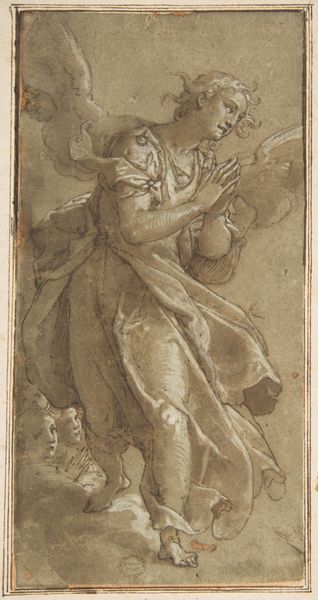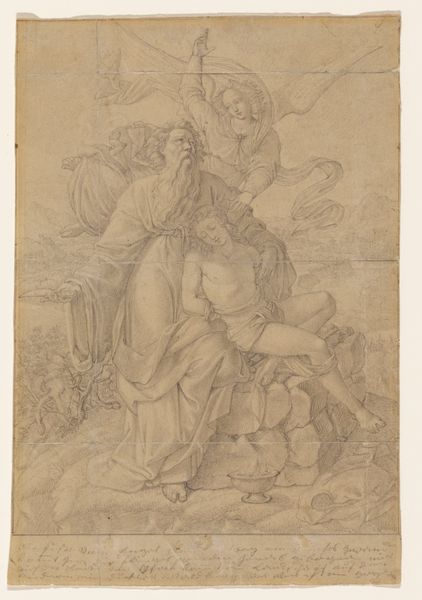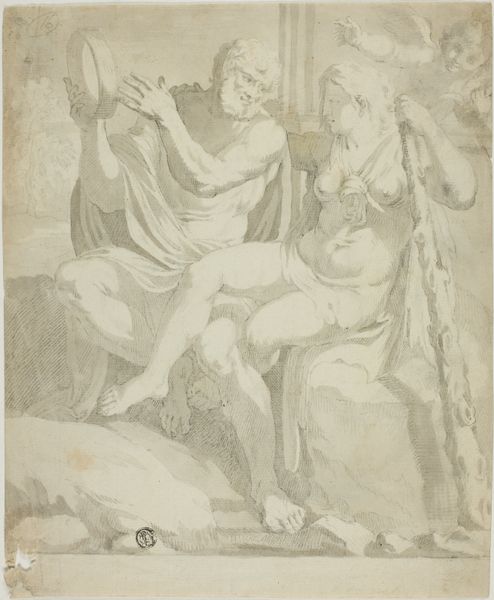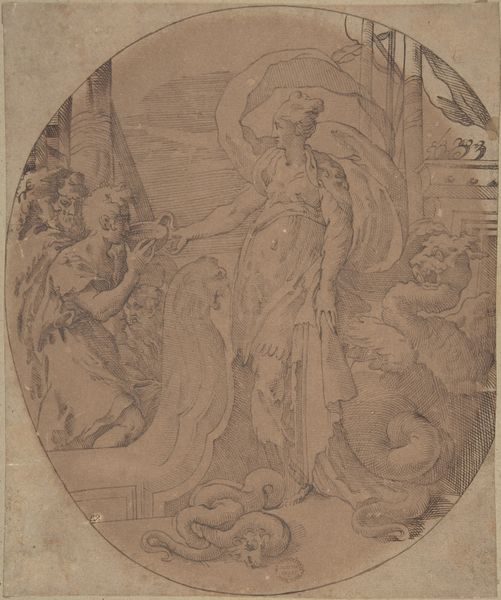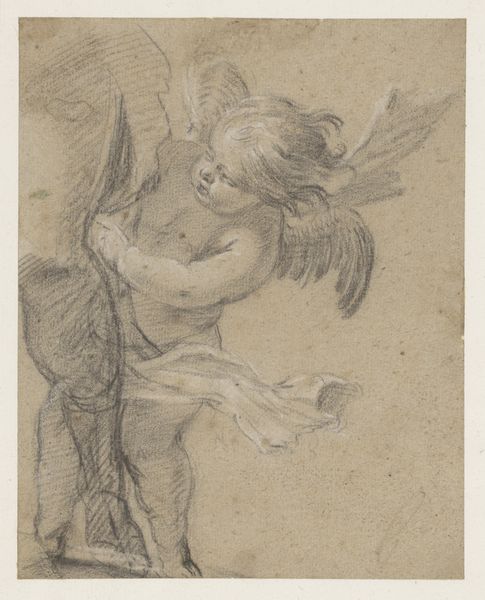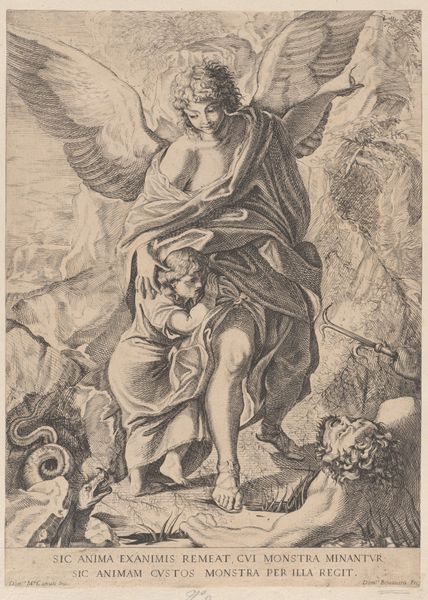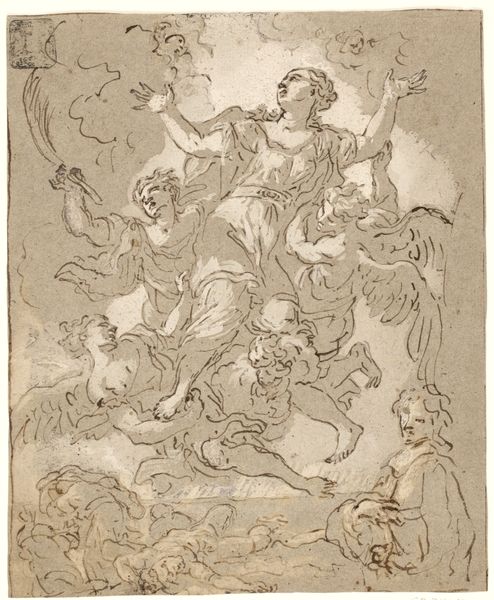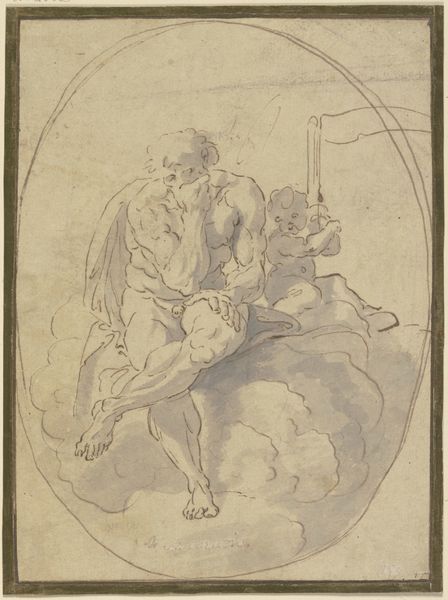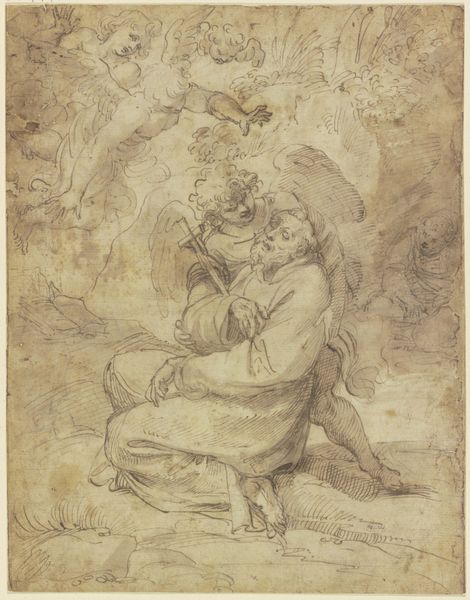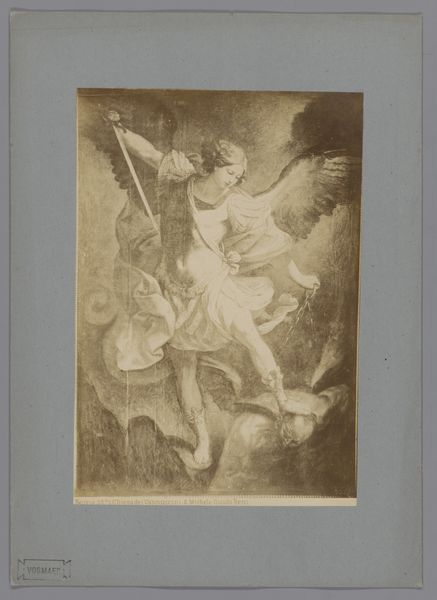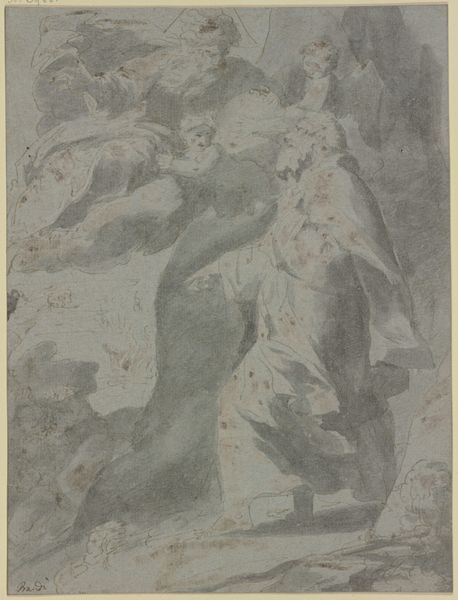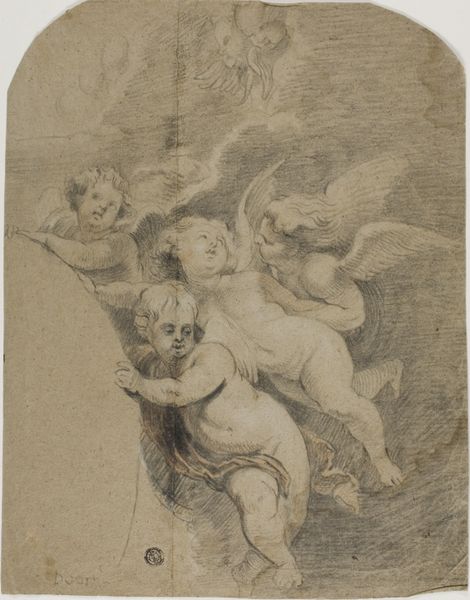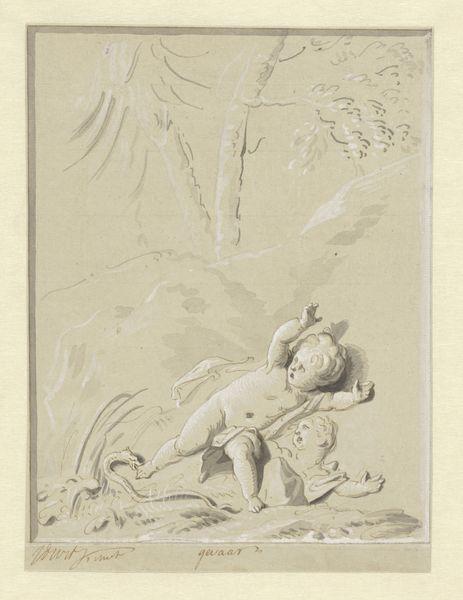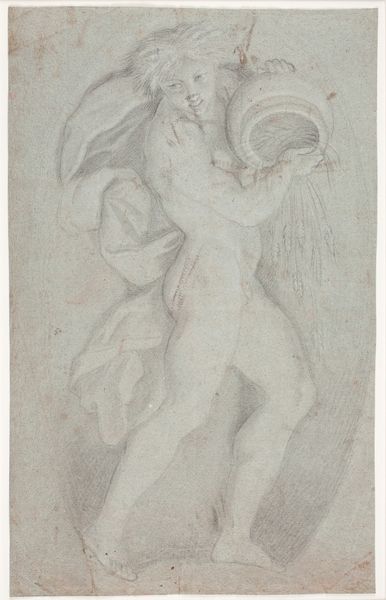
Dante and Virgil on the back of Geryon 1790 - 1844
0:00
0:00
drawing, print, ink, pencil, charcoal
#
drawing
#
narrative-art
# print
#
pencil sketch
#
charcoal drawing
#
figuration
#
ink
#
pencil drawing
#
romanticism
#
pencil
#
charcoal
Dimensions: sheet: 13 3/16 x 10 3/4 in. (33.5 x 27.3 cm)
Copyright: Public Domain
Curator: Looking at this drawing by Bertel Thorvaldsen, "Dante and Virgil on the back of Geryon," likely executed between 1790 and 1844 and held here at the Metropolitan Museum of Art, the first thing that strikes me is how precarious their journey seems to be. Editor: I agree, the muted tones really amplify a feeling of somber unease, almost like they’re adrift in a charcoal sea. The composition has a sort of classical drama about it, even though the sketch itself appears unfinished. Curator: It’s a preparatory sketch, and Thorvaldsen, as a leading figure in Neoclassical sculpture, engaged with Dante’s Inferno often. He really wrestled with how to give visual form to the complexities of the poem. Geryon, in Dante, is this monstrous figure, part man, part reptile, symbolizing fraud. To place Dante and Virgil upon his back implicates them within this very visual and tangible moral landscape. Editor: Yes, and I see such a duality within Geryon. He possesses a human-like face with intense features and forward looking gaze, but simultaneously animalistic features like large paws, hinting at a deeper primal nature lurking beneath. I’m interested in how Thorvaldsen blends those symbolisms, presenting the complexities of good and evil, almost as the coexistence of man and animal within Geryon. Curator: Absolutely, and the artist positions them not merely as observers but active participants in a journey through the self. He produced it when art institutions were really promoting grand narrative painting and sculpture that communicated morality. There’s a kind of inherent commentary woven in about public responsibility within Romantic-era art here, particularly for institutions that shape these national stories. Editor: It speaks volumes about power and vulnerability too. Note the slight but tangible protection the angel offers Virgil. It reads as an embracing form, as protective wing or cloak, almost as if divinity is acting as intermediary within these complex allegorical frameworks, safeguarding their journey but not preventing it altogether. Curator: What you're pointing to reminds me of just how embedded in philosophical thought and socio-political expectation even preliminary drawings could be, at this period. Editor: Absolutely! Seeing it through both our perspectives adds depth. The emotional current carried by these enduring symbols continues to resonate with me long after this viewing.
Comments
No comments
Be the first to comment and join the conversation on the ultimate creative platform.
